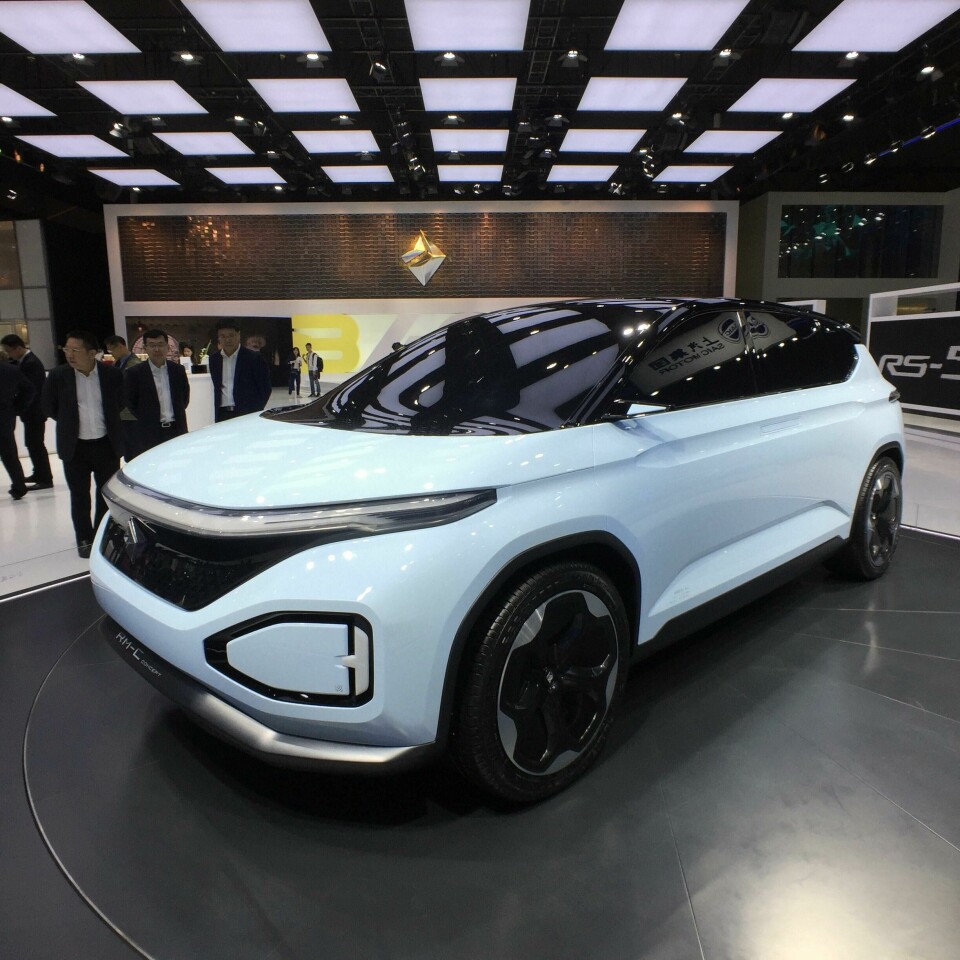
Shanghai 2019 overview
Now the dust has settled on the biggest auto show of the year, we asked Drew Meehan join the dots of what we saw in April in Shanghai
Heading into Auto Shanghai 2019, it was easy to be dismissive of the myriad midsized SUVs and 450+ new EV brands that dominate the massive show. While there are plenty of vaporware vehicles and seen-it-somewhere-before SUVs to be found in the sprawling National Convention and Exhibition Center in Shanghai, the bigger message of the show was that EVs are quickly becoming mainstream in China and design—both inside and out—has matured at an astonishing pace.
Mature design is not what most comes to most Europeans’ minds when discussing Chinese cars, but the mainstream brands’ newest offerings are now largely on equal design terms to European, Japanese and Korean brands—and some are arguably moving ahead. Many Chinese brands have European design chiefs leading the way, but there is also a new group of Western-trained Chinese designers that are quickly showing themselves to be up to the task. While quality may still be a step behind most global manufacturers, that’s coming up quickly as well, and the in-car user experience is being pushed further, faster, than anywhere else, with impressive results that make many current European offerings look downright old-fashioned, if, perhaps, still a step safer.

There were a lot of great production and concept cars to see in Shanghai, but classifying the cars was at times a tricky task in itself. Some companies presented concept cars that they claimed to be production previews, while others were showing what they called production cars—but with a brand or even whole company so new that production reality might never come. While many companies are rushing EV versions of existing vehicles out to consumers to capitalize on the hot market, others are creating new sub-brands to do the job, blurring the lines between brands even more than the already daunting joint-venture setup that’s been the hallmark of the Chinese industry. So what to make of it all? Well, the design trends crossed all of those boundaries, and laid bare fairly quickly where the industry stands.
As pure production models go, there were so many new SUVs on show from China’s big players that it was difficult to take them all in. What was most notable was how many pure electric models were being displayed, but also how their design is taking a two-pronged approach. It seems that most brands, such as BYD, GAC and Chery, have gone with a familiar formula, introducing new EV SUVs in largely the same skins as their ICE brethren, but with unique grills or detailing to indicate their electric underpinnings. Elsewhere, EV’s were being given their own sub-brand, with unique branding, styling and equipment levels, such as Geely’s Geometry, GAC’s Aion, or BAIC’s Arcfox. This isn’t exclusive to premium models, however, with entry-level EV brands such as Sinomach’s Zedriv, Great Wall Motor’s Ora, or Singulato aiming squarely for the city car segment.
What is becoming clear is that a distinctively “Chinese EV DRG” is emerging. Sharp, narrow, wide headlamps set high on a grill-less front clip (even on the hood surface itself) lend many electrified vehicles a sense of modernity, or technical prowess, that is very popular with early-adopters in China eager to show off their EV. Nio’s ES6 is perhaps the most extreme version of this philosophy in production, with its Stormtrooper-esque front-clip design, but the trend is clear across many brands. The Weltmeister EX5 Pro, XPeng P7, Enovate ME7, Aion LX, Dorcen E20—all introduced over the past year—share the look.
Interestingly, this style is moving into ICE-powered vehicles as well, with a new generation of more traditional SUVs showing high-set stripe-style lamps integrated alongside or above their huge grills. The Exeed TXL, Dongfeng CS75 Plus, Zotye B21 and A16, Leading Ideal ONE, and the Leopaard Coupe all use this quite distinctive Chinese look in their DRG, with many shifting from a more traditional (European) “hanging” lamp and grill combination in previous models. This is giving Chinese cars—particularly SUVs and Crossovers—a distinctive look that sets them apart. When we look at the concepts of the show, this trend is even more apparent.
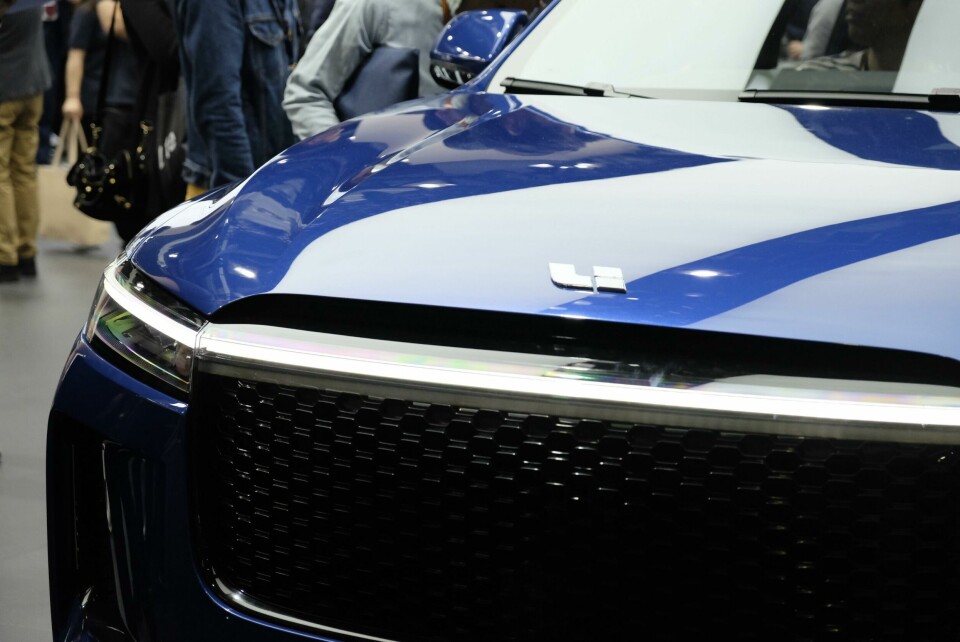
There were so many concepts to see that it was almost impossible to see them all in the two media days, and the quality of the design and concepts was truly world class across the board. The point of most of the Chinese concepts was also clear, to establish a clear brand image in a sea of startups. EV’s are now a fact of life, but brand is king, and everyone is rushing to be the next big thing. The need to stand out is clear, as brands are created almost weekly—often as confusing joint—and sometimes will little or no clear foundation. So style is an important differentiator on the busy streets of Chinese cities, and the smart brands have taken notice.
The proliferation of “Tesla-fighting” large EV sedans was the clearest attempt to capitalize on the halo effect. Nio’s ET, Xpeng’s P7 and Enovate’s ME-S all followed the familiar formula set by the Tesla Model S. With long, lithe forms and sporting pretensions, the cars are all clearly gunning for the same market, with Nio and XPeng’s entries looking surprisingly similar in both concept and execution, but each being convincing alternatives if their technology can back up their style. Startup brand Enovate used its ME-S concept to drum up a new round of funding at the show, and promise a production version of the very sharp-looking car in the next couple of years. Geely also showed a sedan concept, the Preface, a very handsome sedan that would look at home in any European brand’s model lineup, eschewing many of the recent Chinese-market styling trends in favour of classical, but nicely executed, surfacing and details.
Infiniti’s Qs Inspiration sedan concept was shown next to the Qx Inspiration crossover first shown in Detroit. The brand has struggled over the years to establish a clear identity, but new Executive Design Director Karim Habib is determined to make the unapologetically clean and modern styling and materials stick. The car’s proportions use its EV platform as a feature, with a thicker bodyside giving the car heft and gravitas, and flat floor and easy entry making the car appealing to the crossover-crazy public. The Japanese-inspired interior is a calm and relaxing place to be, so it will be interesting to see how much of these concepts make it through to production. The potential of Infiniti as a modern, design-led EV brand is big, especially with parent Nissan’s EV market lead, but whether the purposefully challenging styling will play in the Chinese and US markets remains to be seen.
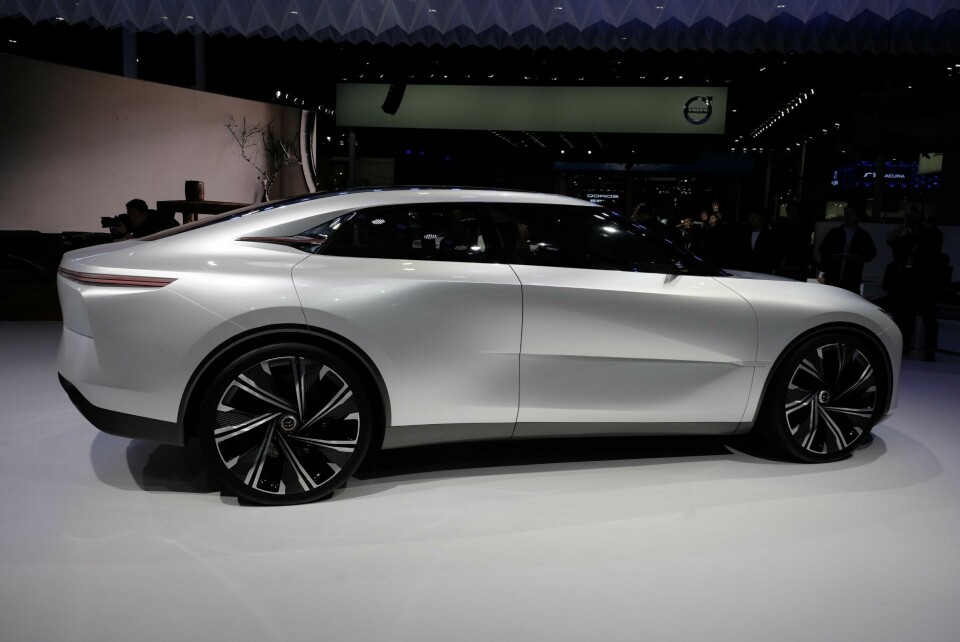
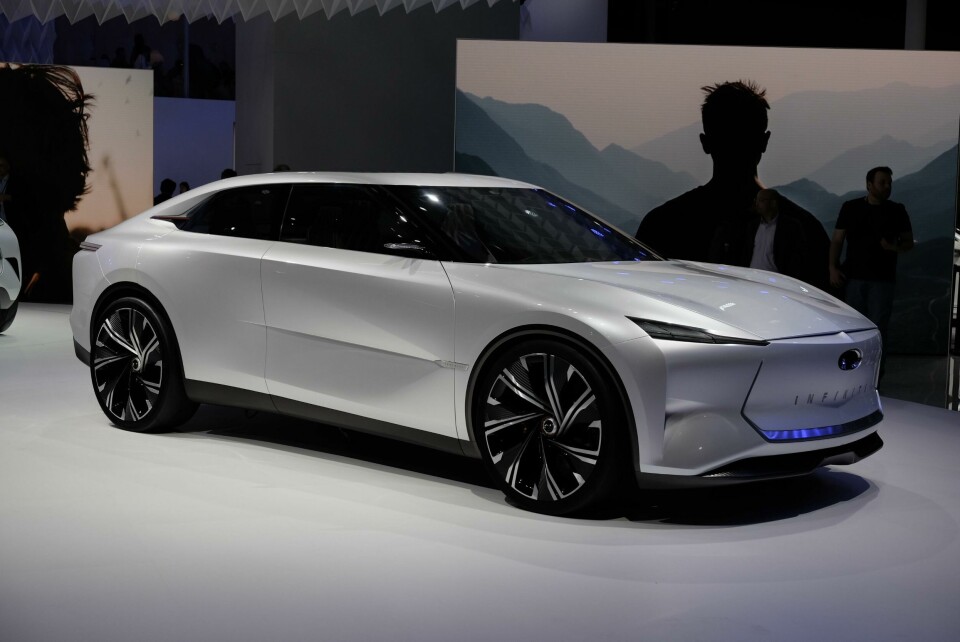
Maximizing the EV platform to create large interior spaces and crossover proportions was not limited to Infiniti though. Exeed’s E-IUV is a masterclass in surfacing, an autonomous luxury monovolume designed to set new Design VP Kevin Rice’s tone for Chery’s new premium brand. Similarly, Aiways’s U7 Ion had the stamp of recently-appointed Advisor Ken Okuyama on it, with sharp edges and modern surfacing moving past the busy organic forms so common in the last generation of Chinese designs. Showing more product-design inspired styling, the chunky Baojun RM-C shows real potential as a prototype for the next-generation of the MPV. We will probably have to wait another year to see the production model and get a better idea of how the extra height and cab-forward stance translates to interior space, but this was a promising concept from the 9-year old joint-venture brand desperate to establish a clear brand strategy in the consumer imagination. Roewe also followed the MPV trend with the Vision I concept. Displaying a softer, friendlier style than many of the other brands and it’s own previous show cars, the car was perhaps the closest thing to a familiar MPV, but showed what slight styling tweaks and a premium interior can do for the genre. All of these concepts indicate a typological shift underway in China, with a comeback envisioned by many for the MPV typology, but with a new EV sport-luxury format that has never really been seen before.
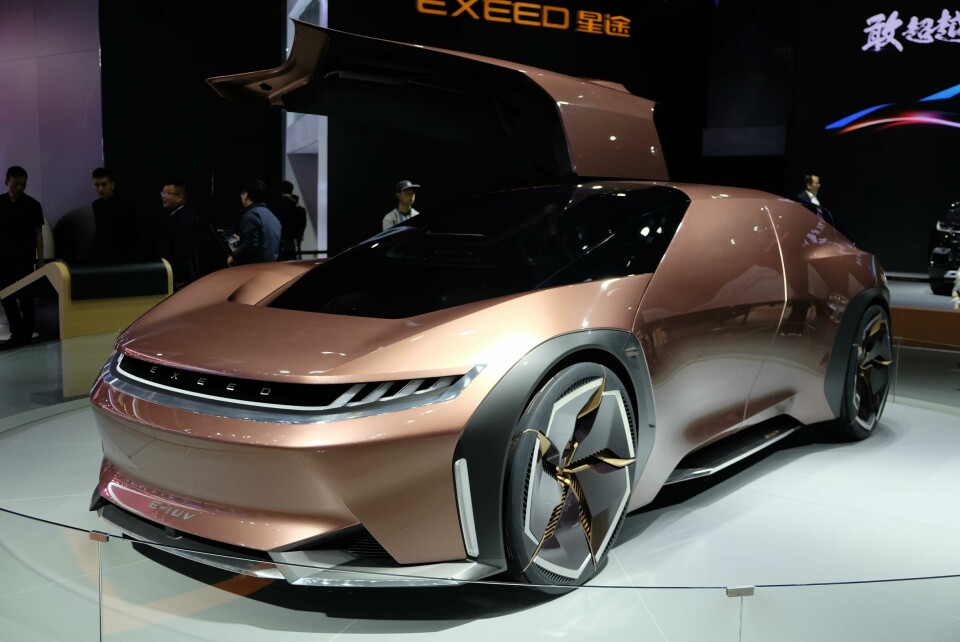
The European brands also brought concepts to Shanghai, with VW Group’s EV assault continuing with both the VW ID Roomzz fullsize SUV and Audi’s Ai:me city car concept getting a lot of attention. The ID Roomzz was yet another iteration of the ID design language we’ve seen for years now, but the car’s huge size helped somewhat to balance the caricature-esque proportions, characterized by massive wheels and soft—almost puffy— surfacing and flush detailing. The AI:me, on the other hand, looked essentially like the AICON concept, first shown in Frankfurt in 2017, that had been shrunken in the dryer. The low-slung monovolume proportions, large side glass, and airy interior all echo the earlier autonomous E-segment concept, but in a much smaller form. The exterior design is notable for its extensive use of parametrically-modeled textures over much of the surface, blending lighting and sheetmetal into one continuously sharp-edged diamond-pattern. Aggressive and low, Audi appears to be doubling down on its unique interpretation of future luxury, and if the designers are right, they’ll have a big advantage, as nobody else seems to be entertaining anything remotely similar.
So what can we take away from the Shanghai show? First of all, the auto show is most definitely not dead yet, at least not in China. The number of new brands—almost entirely EV based—made the show feel like automotive speed dating. So many interesting brands to meet, but so little time to get to know them. The Chinese market is now fully committed to EVs, and their diversity and ubiquity was fascinating to see. But it’s also clear that many of the clever new brands won’t survive long term, meaning that many of the interesting cars from the show likely won’t ever make production. Those that do though, will be world-class contenders in design, powertrain and infotainment. We’re long past the point where Western OEMs can ignore Chinese manufacturers, but I think it’s time for Western designers to take a look East and see what they can learn from a market that has jumped past tradition and straight into the future.
Drew Meehan is the principle design strategist and analyst at Mensen Auto, who also writes for Car Design News.






































